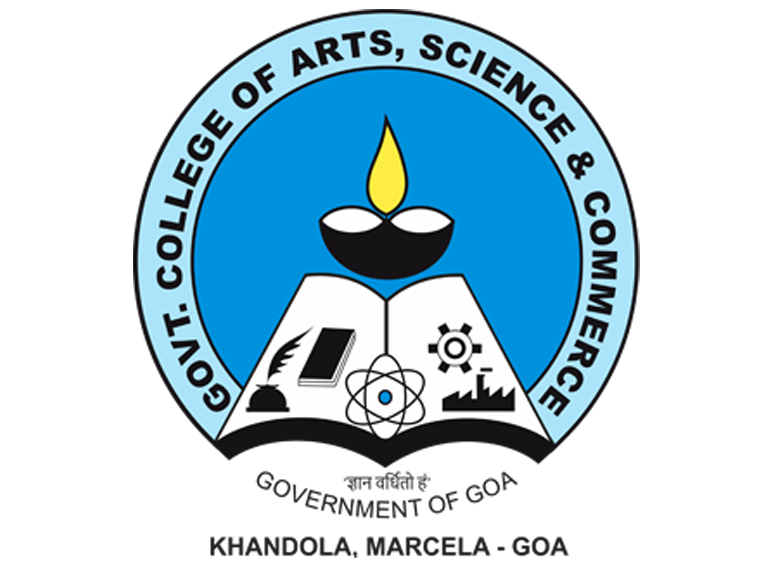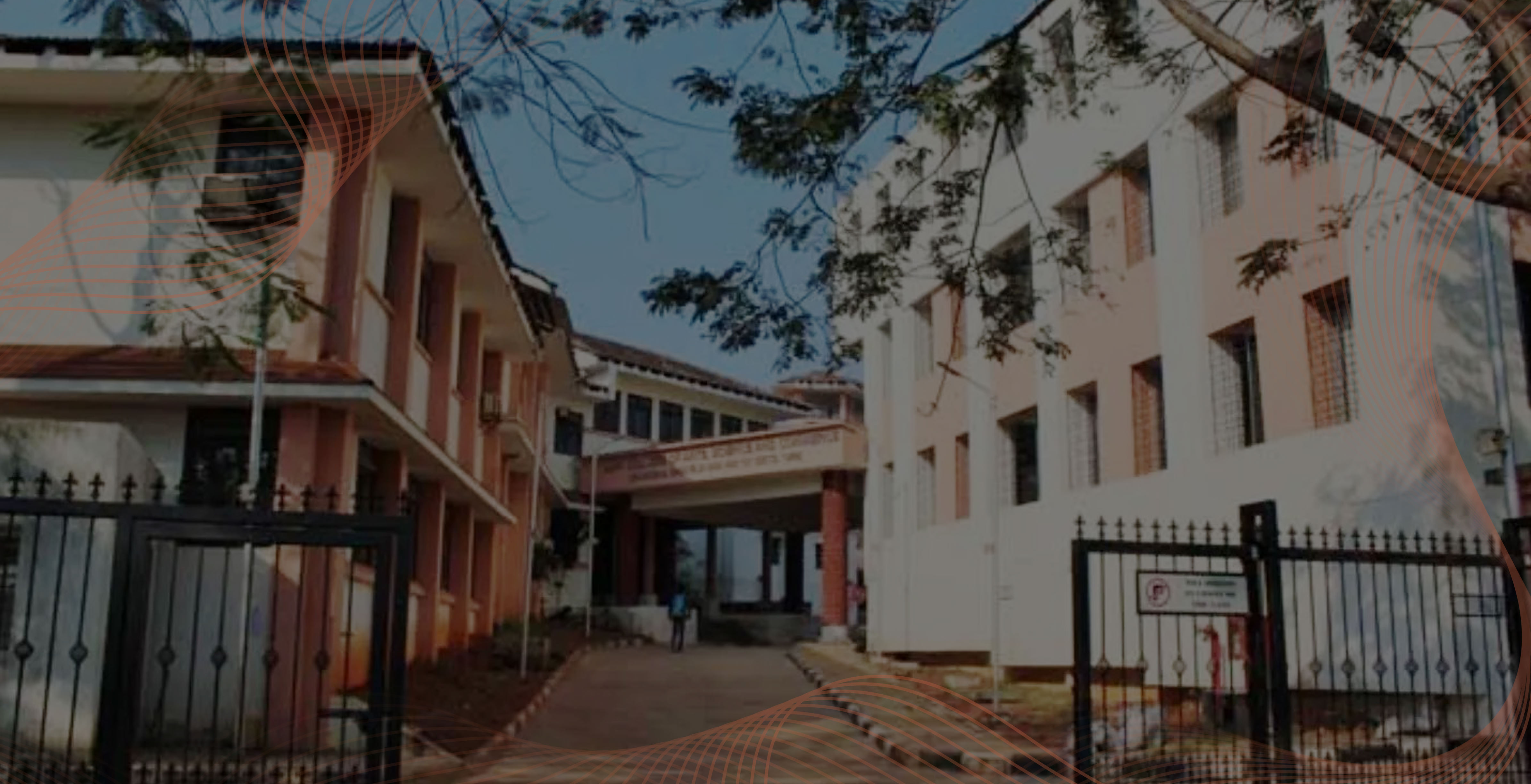
Govt. College of Arts,Science & Commerce, Khandola, Marcela-Goa
Accredited by NAAC with Grade A+ (CGPA: 3.43)
Institutional Digital Repository
Powered by National Digital Library of India (NDLI)


Communities in DSpace
Select a community to browse its collections.
Recent Submissions
Reminisces of Goa Statehood Day
(Dempo, 2024-06-02) Salgaonkar, Seema P.
A Geographical Study of Women Migrant Workers of Salcete and Ponda Talukas
(Konkan Geographers Association of India, 2023) Nemikal, Vijaya; Rath, Prabir Kumar
Labour migration has become a common phenomenon in today's world. Within India, migrants from rural areas move move to urban areas for better employment opportunities and better wages. However, women and men are differentially placed in availing these opportunities. Though migration is higher in males than females, the role of female migrants cannot be overlooked. The study focuses on unskilled and low skilled women migrant workers of Salcate and Ponda talukas, who have migrated along with their spouses to Goa from other states of India. It focuses on their employment and income, their contribution to the family income, status in family and society and the impact of Covid 19 pandemic on them. The study has used both primary and secondary data. Primary data was collected using questionnaire cum schedule from 67 female migrant workers using purposive sampling.
The analysis suggested that the female migrant workers belong mostly to the productive age group. Though the income eamed by these women is low, it has proved as a notable contribution in the life of these migrants. There is no negative impact on their children and other family members due to their employment. They are also a part of decision making in their family as a result of their contribution to the family income. They maintain a healthy relation with their employers and are paid according to the nature of the work they perform. They find healthy relationship with ther colleagues at work. Most of the female migrant workers stay in rented accommodation consisting of one room and kitchen and a common toilet outside the house. The female migrant workers were highly impacted by the Covid 19 pandemic and related lockdown. Most of the female migrant workers lost their jobs due to lockdown and the others nad to face a reduction in their monthly salaries. They managed their household expenses by taking loans and using ther past savings. They fear the impact of Covid 19 may recur and consider it as a major threat to their employability, occurs again in future.
Labour Migrants in Hotel Industry of Coastal Stretch of Pernem Taluka
(Konkan Geographers Association of India, 2023) Naik, Siddhi; Nemikal, Vijaya
Goa is one of the top tourist destinations in the country. This erstwhile Portuguese colony is the best known for its serene beaches which attracts the tourists in the world. The evolution and development in tourism industry has created thousands of jobs, developed the infrastructures of the place, and helped in cultural exchange within the country, in between regions and the locals. Goa having a long stretch of coastal belt from north to south experiences a great scope for beach tourism and also hotel industry. The emergence of hotel industry in the Pernem Taluka has also led to infrastructural development, hospitality services, connection of interior rural areas to city regions and overall up gradation of the region. These hotels, paying guesthouses and star hotels, cater to the influx of indian and international tourists all through the year. The months of December and January mark the peak tourist season in the state.
The study showcases the working conditions of labour migrants working in the coastal belt of Pernem Taluka of Goa. It focuses on understanding the situations and conditions of the labour migrants working in the hotel industry. The study emphasizes on the demographic and occupational structure of labour migrants, factors responsible for their migration and the socio-economic status of labour migrants, and the future plans and prospects of the labour migrants.
The study shows that most of the migrants who are working in the hotel industry are from Northern states of India and 75 percent of the total migrants have migrated alone leaving their families at the place of origin. 61.67% percent of the migrant workers are working as permanent workers while the others are seasonal workers who work during the peak time of tourist arrivals from the month of October to March. The hotel industry attracts most of the migrants belonging to productive age group. The factors responsible for their migration are lack of employment at the place of origin since the education qualification is also low. Majority of the migrants working in the hotel industry are engaged in low skilled jobs like housekeeping, kitchen assistant, helper, or in service sectors as bar teriders, waiters, etc. Some of the employees are given a separate accommodation which is provided by the employer with good sanitation and other basic facilities. whereas some of them are staying at the work place in a shared one room kitchen. Majority of the migrants are working longer hours in a day and hardly get time to interact with locals, hence their relation with locals is poor and are unable to have a social life at the current place of residence. The study also shows that majority of the migrant labourers are unfamiliar with the Goan culture. Majority of the migrants labourers are willing to live and work in Goa while the rest are unsure about their future plans.
Impact of Eco-Tourism on Locals in Sattari Taluka - Goa
(Konkan Geographers Association of India, 2023) Rane, Siddhi Chandrakant; Nemikal, Vijaya
Ecotourism is an enlightening and participatory travel experience to natural and cultural environments, which is beneficial to all tourism role players. Ecotourism is newly emerging form of tourism in Goa. The eastern part of Goa covering the Western Ghats has a long stretch of forests. Some areas of these forests are used for eco tourism. The Sattari taluka situated in the Western Ghats section of Goa also has a few important eco tourism sites. It is pertinent to study about the locations of these eco-tourism sites situated in forested areas of Sattari Taluka of Goa, and the positive and negative impact they have on the local population. The paper also focuses on the impact of eco tourism on environment of Sattari taluka. The study also focuses on different factors responsible for the growth of ecotourism. The study includes both primary and secondary data sources.
The study area includes 9 famous eco-tourism sites, among which 4 eco-tourism sites are flourishing due to their locational setting, natural environment, hospitality, publicity through social media, etc. Majority of employees working at eco-tourism sites are locals whereas only few are migrants. Only 6.6 percent of the local employees are residing within the vicinity of 2 km from the sites while others are from nearby villages. Eco-tourism site helps in overall development of area in terms of roads, establishment of shops and services. This sites influences establishment of small scale businesses like catering services, grocery shops etc. which promotes self employment among the youth. This area shows developing trend in terms of services like public transport and overall development of the region. Younger age group shows positive feedback towards the development of farms while older age group people believes that this type of tourism brings westem culture to rural area and it may takes over the original traditions of region in future. Majority of the locals believe that there is no destruction of environment while a few opine that there is the environment has been modified.
Gender, migration and informal employment: A study of migrant women in Salcete Taluka, Goa
(Sardar Patel Institute of Economic and Social Research, 2024) Nemikal, Vijaya; Rath, Prabir Kumar
This study explores the working and living conditions of migrant women laborers engaged in unskilled and low-skilled jobs in Selecte Taluka, Goa, India, with a particular focus on how these conditions intersect with issues of employment, employability, and education in urban settings. The research has two primary objectives (1) to analyze the working and living conditions of migrart women labourers, and (2) to examine how these conditions relate to the Sustainable Development Goals (SDGs), particularly in the context of employment and gender equality. The study utilizes primary data collected through a questionnaire-based survey of 380 migrant women labourer's, with purposive sampling, supplemented by personal interviews for deeper socio-economic insights. The findings indicate that the majority of these women occupy casual and temporary positions, predominantly as domestic workers and factory laborers. In terms of living conditions, many reside in overcrowded and inadequate rented accommodations, often lacking proper sanitation and waste disposal facilities. By linking these issues to the SDGs, the study highlights the critical gaps in employment opportunities, educational access, and gender-based discrimination that migrant women face These challenges exacerbate then vulnerability, reinforcing the cycle of poverty and limiting their upward mobility. The paper emphasizes the need for targeted policy interventions that enhance economic security and employability for migrant women, with a focus on vocational training, educational opportunities, and formai iabour rights. Addressing these "missing links" is essentral not only for improving the living and working conditions of migrant women but also for fostering a more equitable and sustamable urban environment in line with India's development goals.